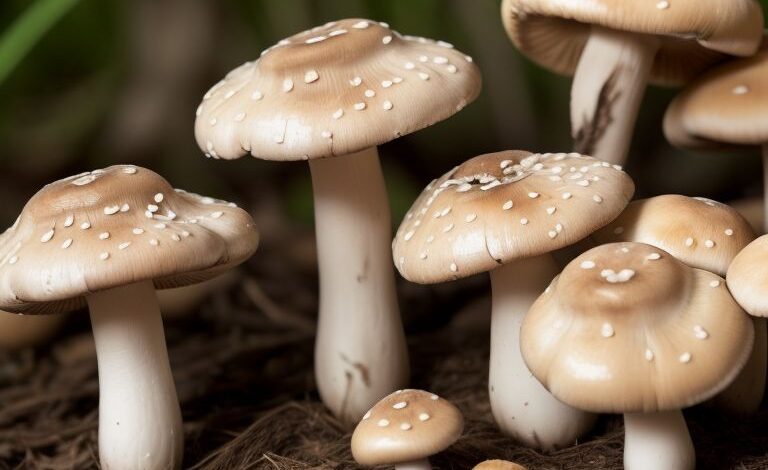Understanding Mushroom Intolerance Symptoms: What You Need to Know

Understanding Mushroom Intolerance Symptoms: What You Need to Know
Mushrooms are a popular ingredient in many cuisines around the world, prized for their unique flavors and nutritional benefits. However, for some people, eating mushrooms can lead to unpleasant symptoms. This could be due to a mushroom intolerance, a condition where your body has difficulty digesting certain components found in mushrooms.
In this article, we’ll explore what mushroom intolerance is, the common symptoms associated with it, and how you can manage and diagnose this condition.

What is Mushroom Intolerance?
Mushroom intolerance is not the same as a mushroom allergy. While an allergy involves the immune system reacting to mushroom proteins as if they were harmful invaders, an intolerance typically involves the digestive system and how it processes certain substances found in mushrooms. Intolerances can lead to discomfort and digestive issues, but they are generally less severe than allergies.
Difference Between Mushroom Intolerance and Allergy
It’s important to differentiate between an intolerance and an allergy:
- Mushroom Allergy: Involves the immune system and can lead to severe reactions, such as anaphylaxis. Symptoms may include hives, swelling, difficulty breathing, and even life-threatening complications.
- Mushroom Intolerance: Involves the digestive system and typically causes gastrointestinal symptoms like bloating, gas, and diarrhea. It’s usually not life-threatening but can cause significant discomfort.
Common Symptoms of Mushroom Intolerance
If you suspect you have a mushroom intolerance, you may notice certain symptoms after consuming mushrooms. These symptoms can vary in intensity depending on the individual and the amount of mushrooms consumed.
1. Digestive Issues
The most common symptoms of mushroom intolerance are related to the digestive system. These may include:
- Bloating: Feeling of fullness and tightness in the abdomen.
- Gas: Excessive flatulence or burping after eating mushrooms.
- Diarrhea: Loose, watery stools may occur, sometimes accompanied by abdominal cramps.
- Nausea: A feeling of queasiness or an urge to vomit.
- Stomach Pain: General discomfort or pain in the abdominal area.
2. Fatigue
Some people with mushroom intolerance experience fatigue after consuming mushrooms. This could be due to the body’s reaction to the indigestible components, leading to a general feeling of tiredness and lethargy.
3. Headaches
Headaches, including migraines, can be a symptom of mushroom intolerance. These headaches may occur shortly after eating mushrooms and can vary in severity.
4. Skin Reactions
Though less common, some individuals may experience skin reactions as part of their intolerance. Symptoms can include:
- Rashes: Red, itchy patches of skin.
- Hives: Raised, itchy welts on the skin.
- Eczema Flare-ups: For those already suffering from eczema, consuming mushrooms may worsen the condition.
5. Respiratory Symptoms
In rare cases, mushroom intolerance can lead to mild respiratory symptoms, such as:
- Nasal Congestion: A stuffy nose or sinus congestion.
- Sneezing: Frequent sneezing after consuming mushrooms.
- Mild Wheezing: Some individuals might experience slight wheezing, though this is more common with allergies than intolerances.
Causes of Mushroom Intolerance
The exact cause of mushroom intolerance is not fully understood, but there are several theories and contributing factors.
1. Fungal Proteins
Mushrooms contain specific proteins that some people’s digestive systems may struggle to break down. This can lead to an accumulation of these proteins in the digestive tract, causing the symptoms associated with intolerance.
2. Chitin
Chitin is a complex carbohydrate found in the cell walls of mushrooms. It’s similar to the fiber found in plants but is harder to digest for some people. This indigestibility can cause gastrointestinal issues, such as bloating and gas.
3. Mannitol
Mannitol is a type of sugar alcohol found in mushrooms. For some individuals, mannitol can be difficult to digest, leading to symptoms like diarrhea and stomach pain. Mannitol is also known to draw water into the intestines, which can contribute to diarrhea.
4. Histamine Response
Certain mushrooms can trigger the release of histamines in the body, leading to symptoms like headaches, nasal congestion, and skin rashes. This is more likely in people who are sensitive to histamine or who have other histamine-related intolerances.
Diagnosing Mushroom Intolerance
If you suspect that you have a mushroom intolerance, it’s important to seek a proper diagnosis to manage your symptoms effectively. Here’s how you can approach diagnosis:
1. Keep a Food Diary
One of the first steps in identifying a food intolerance is to keep a detailed food diary. Record everything you eat and note any symptoms you experience, including their severity and timing. This can help you and your healthcare provider identify a pattern.
2. Elimination Diet
An elimination diet involves removing suspected trigger foods, like mushrooms, from your diet for a period of time to see if symptoms improve. After a few weeks, you gradually reintroduce the food to determine if it causes symptoms.
- Note: It’s important to do this under the guidance of a healthcare provider or dietitian to ensure you’re still getting all necessary nutrients.
3. Food Intolerance Testing
Some healthcare providers offer food intolerance tests that can help identify specific foods causing symptoms. These tests may include blood tests, breath tests, or skin prick tests, though their accuracy can vary.
4. Consultation with a Gastroenterologist
If your symptoms are severe or persistent, it’s a good idea to consult a gastroenterologist. They can perform more in-depth tests, such as an endoscopy, to rule out other conditions and confirm a mushroom intolerance.
Managing Mushroom Intolerance
Once you’ve identified a mushroom intolerance, managing your symptoms typically involves dietary adjustments. Here are some strategies to help you avoid symptoms and maintain a balanced diet.
1. Avoid Mushrooms
The most effective way to prevent symptoms is to avoid eating mushrooms altogether. This includes common varieties like button mushrooms, shiitake, portobello, and oyster mushrooms.
- Tip: Be cautious with processed foods, as mushrooms can be hidden ingredients in sauces, soups, and vegetarian products like meat substitutes.
2. Read Food Labels Carefully
When grocery shopping, always read food labels to check for mushrooms or mushroom-derived ingredients. Some products may list mushrooms under different names, such as “fungal protein” or “natural flavors,” so be vigilant.
3. Find Alternatives
There are many plant-based foods that can replace mushrooms in recipes, providing similar textures and flavors. For example:
- Eggplant: Can mimic the meaty texture of mushrooms in dishes like stir-fries and stews.
- Zucchini: Works well as a substitute in soups and salads.
- Tempeh: Offers a similar umami flavor and can be used in vegetarian dishes.
4. Consult a Dietitian
If you’re struggling to maintain a balanced diet without mushrooms, consider consulting a registered dietitian. They can help you find alternatives and ensure you’re getting all the nutrients you need.
5. Consider Enzyme Supplements
In some cases, enzyme supplements can help break down the indigestible components in mushrooms, reducing symptoms. However, this should be done under the guidance of a healthcare provider.
Living with Mushroom Intolerance
Mushroom intolerance can be challenging, especially if you enjoy the taste and texture of mushrooms in your diet. However, by understanding the symptoms, causes, and management strategies, you can continue to enjoy a varied and nutritious diet without the discomfort.
If you suspect you have a mushroom intolerance, take the time to get a proper diagnosis and make the necessary dietary adjustments. With careful planning and the right support, you can manage your symptoms and maintain a healthy, balanced lifestyle.



